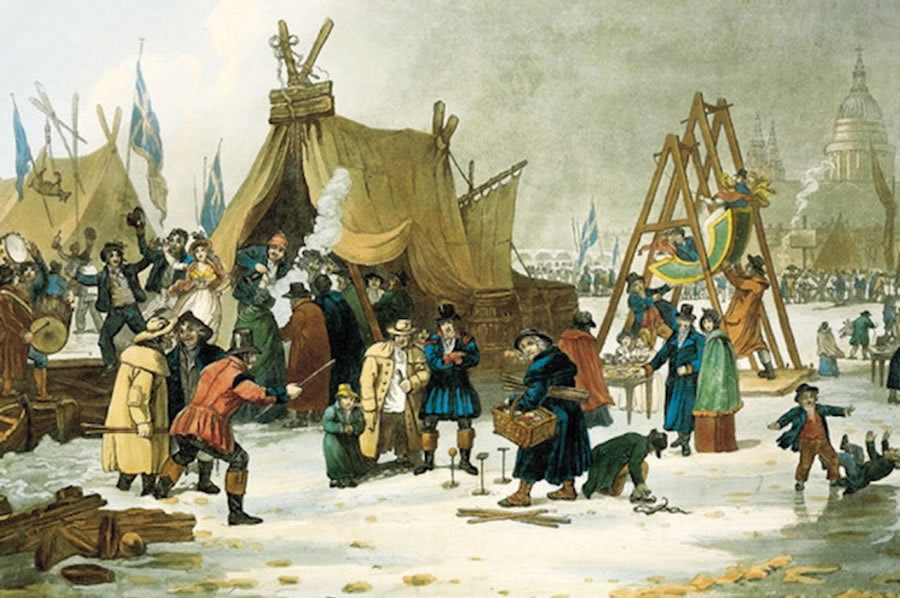February 1814: King George III was on the throne, Tory Lord Liverpool was Prime Minister and the Napoleonic Wars would soon be over. It was also the third coldest winter since 1659, when the Central England Temperature (CET) records began. After weeks of bitter chill, blankets of fog and drifting snow, Londoners awoke on 1 February to find that the River Thames had ground to an icy halt. Between 1600 and 1814, it was not uncommon for the River Thames to freeze over for up to two months at time.
There were two main reasons for this; the first was that Britain (and the entire of the Northern Hemisphere) was locked in what is now known as the ‘Little Ice Age’. The other catalyst was the medieval London Bridge and its piers, and specifically how closely spaced together they were. During winter, pieces of ice would get lodged between the piers and effectively dam up the river, meaning it was easier for it to freeze.
Activities and entertainment at frost fairs ranged from bull-baiting, horse and coach races and puppet plays to sledging, nine-pin bowling, ‘throwing at cocks’ and dancing. The 1814 fair even had its own main street – signposted The City Road – where hawkers sold trinkets and souvenirs, children’s swings were erected, and gambling dens appeared.
There are even eye-witness accounts of an elephant being led over the ice near Blackfriars Bridge! Close to a dozen printing presses were also dragged out and erected on the frozen river, with typographers churning out poems to commemorate the ‘great frost’. One printer named George Davis published a 124-page book, Frostiana; or a History of the River Thames in a Frozen State from his outdoor printing stall.
Yet, the main draw appears to have been food and drink. Oxen were roasted in front of roaring fires, mutton was served in slices and mince pies and gingerbread blocks sold, all permeated (quite liberally) with alcohol; although tea, coffee and hot chocolate were also on sale. Temporary bars and ‘fuddling tents’ fashioned from sail cloth and oars (named so because of the ruinous effect of the strong spirits being offered) popped up over the ice, selling all manner of intoxicating liquors. Purl, similar to Vermouth, was a mix of gin and wormwood wine served hot and Mum was a beer infused with spices. Fruit and gingerbread-sellers also sold cups of gin to accompany their produce.
Risks were, of course, inevitable. As well as the threat of pickpockets, visitors were undoubtedly fleeced both by the watermen, who charged a toll of 2d or 3d plus tip for access alone, and the numerous vendors who smelt a tidy profit. The ice also claimed several casualties, giving way in places and swallowing up businesses, as well as people.
Of course, when there’s ice involved, the event must reach its seasonal end. By the fifth day, 5 February 1814, the wind changed direction, snow became rain and the ominous sound of ice cracking started to reverberate. The pedlars and punters scattered.

